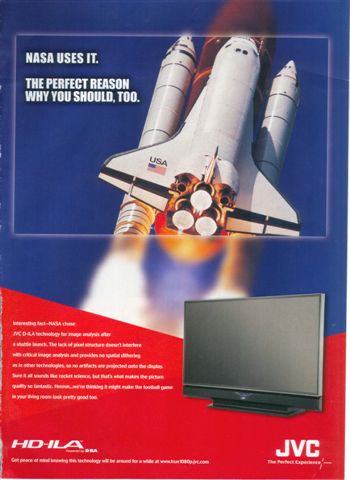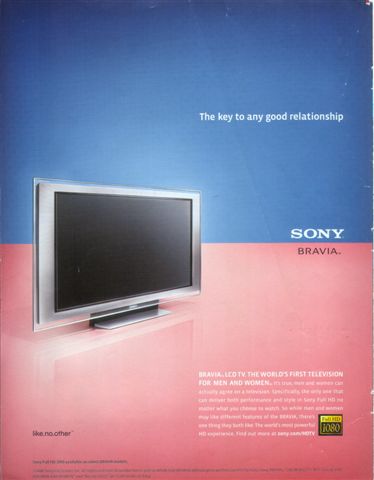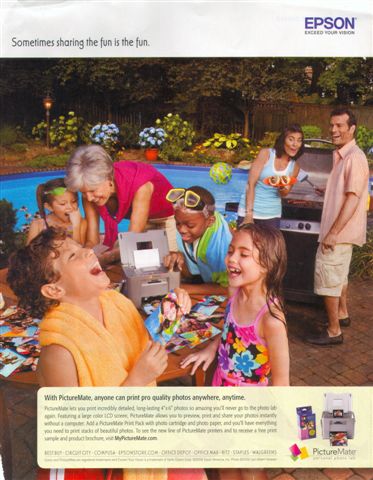Soon it will be Mother's Day, a day filled with fresh flowers, delicious dark chocolates, fancy fragrances, and gem-filled jewelry.
But guys, listen up... the way to a woman's heart is not through these traditional "feminine" gifts. What'll really make her swoon and sigh is sleek, metal, shiny, and fast—women want the latest and greatest consumer electronics and have the hots for high tech, just like men.
A recent survey by Oxygen Network showed that more than half of women surveyed would pick a plasma TV over a two-day vacation in Florida; 77 percent would rather have a new plasma TV than a diamond solitaire necklace. And 86 percent of those surveyed prefer a new digital camera over designer shoes!
The Consumer Electronics Association (CEA) says that women buy 57% of consumer electronics, or about $80 billion of the $140 billion spent on consumer electronics last year. Beyond that, according to Best Buy, women influence 90% of consumer electronics purchases, from the type and look of the big-screen TV to the color of the iPod speakers for the living room.
The CE industry caught on fast, and in 2004 the CEA started its annual "Technology Is A Girl's Best Friend" campaign and awards program, which features marketing-to-women winners in eight product categories: audio, computers, digital imaging, laptop bags, mobile/automotive electronics, portable audio, television, and wireless. Award winners are announced at the Consumer Electronics Show Product Showcase and have included Motorola's RAZR cell phone, in bold fashionista colors like magenta or ice blue.
Some recent ads are also evidence of some smart gender-savvy marketing from the power players in the CE industry. But, as always, some marketers more than others "get" the differences between marketing to men and marketing to women.
Traditionally, most CE ads have focused on the product, not the prospect. They featured a large close-up of the TV, printer, PDA, or whatever high tech gadget is the "hero" of the ad. Then the copy goes into how many megapixels, megawatts, or megabytes the product has. Such ads may have appealed to men, who are always the first adopters of any new technology. But they have no stopping power with women.
That's because women have a longer list of criteria (they want all the same things as men—and then some), and while product specifications are relevant, they are not the only things that drive women's purchase decision.
Which makes me think that JVC clearly has not gotten the message about who the primary buyers of its products are. Take a look at its recent ad for the HD-ILA TV. Very male, old-school, techno-geeky.

Sony has taken a step closer to including women as prospects for its large screen TV business with its latest Bravia campaign. The Bravia's marketing slogan is "The world's first TV for men and women."
You can't miss the strategy here—the top half of the ad features a blue background, and the bottom half has a pink background, with a large image of the Sony Bravia smack dab in the middle. The headline reads: The key to any good relationship"—I guess this is supposed to appeal to women? The body copy continues, "So while men and women may like different features of the BRAVIA, there's one thing they both like: the world's most powerful HD experience." I am pretty sure that women couldn't care less about the powerful HD experience.
Someone at Sony must have heard about "WAF" or the "wife approval factor." WAF has become incredibly important to the sales strategies of smart CE retailers; it's so prevalent that CNET came up with its Top 10 list of WAF products for this past holiday season.
Well, kudos to Sony for recognizing women's buying power in the category. But it missed the opportunity to be relevant to women.

Best Buy has made marketing to women an integrated part of its retail operations. VP of Best Buy Julie Gilbert has said, "We were a boys' toy store designed for boys by boys." But in 2003 Best Buy launched its "customer centricity" growth strategy;and "Jill," the busy suburban mom who wants to enrich her family's life with technology and entertainment, was one of the key customer segments with the most potential for profitability and growth.
Best Buy revamped its store design, customer service, marketing, and product mix to meet "Jill's" needs. Busy moms could get personalized, customized help in store from a PSA—Personal Shopping Assistant—to help them get the right digital camera or home entertainment system for their needs. And "Jills" could get even more assistance from The Geek Squad, Best Buy's 24-hour Computer Support Task Force, which offers carry-in, on-site, or at-home emergency service for everything from set-ups and installs to upgrades.
The key to Best Buy's customer centricity success is its focus on the "software" (or people) who make the women's shopping experience so much better, not the hardware (or high tech gadgets) being sold. Employees are now trained to ask about the customer's lifestyle and what they want technology to do for them.
According to an article in USA Today, best practices from the customer centricity program, and specifically "Jill" stores, are now being implemented system-wide—all 750 Best Buy stores will have softer, more female-friendly decor and more personalized services.
Which just confirms what I've always said: "If you meet the expectations of women, you exceed the expectations of men."
My favorite consumer electronics ad comes from Epson. This ad is chock full of examples of marketing-to-women principles:
- "People power"—Women are hardwired to respond to people as the most important and interesting clement in life. Focus on the prospect, not the product.
- "We not me"—Women are the family "memory keepers," and they look for ways to create experiences where everyone can have a great time.
- "Real not ideal"—Women respond better to advertising that features real people, real situations, real product usage, and real reactions. This ad is genuine, and the people in it look like they could be my next door neighbors.

As a bonus, the ad's multi-generational family setting includes the grandmother—smart casting, considering that PrimeTime Women (women 50-70) are making the majority of the decisions for the households that are at the peak of their spending power. And a lot of that spending is focused on the grandkids.
So, if you didn't pick up that new pink Ipod Nano or plasma TV for the holidays, start thinking about Mother's Day. Remember that diamonds are not a girls' best friend anymore.




